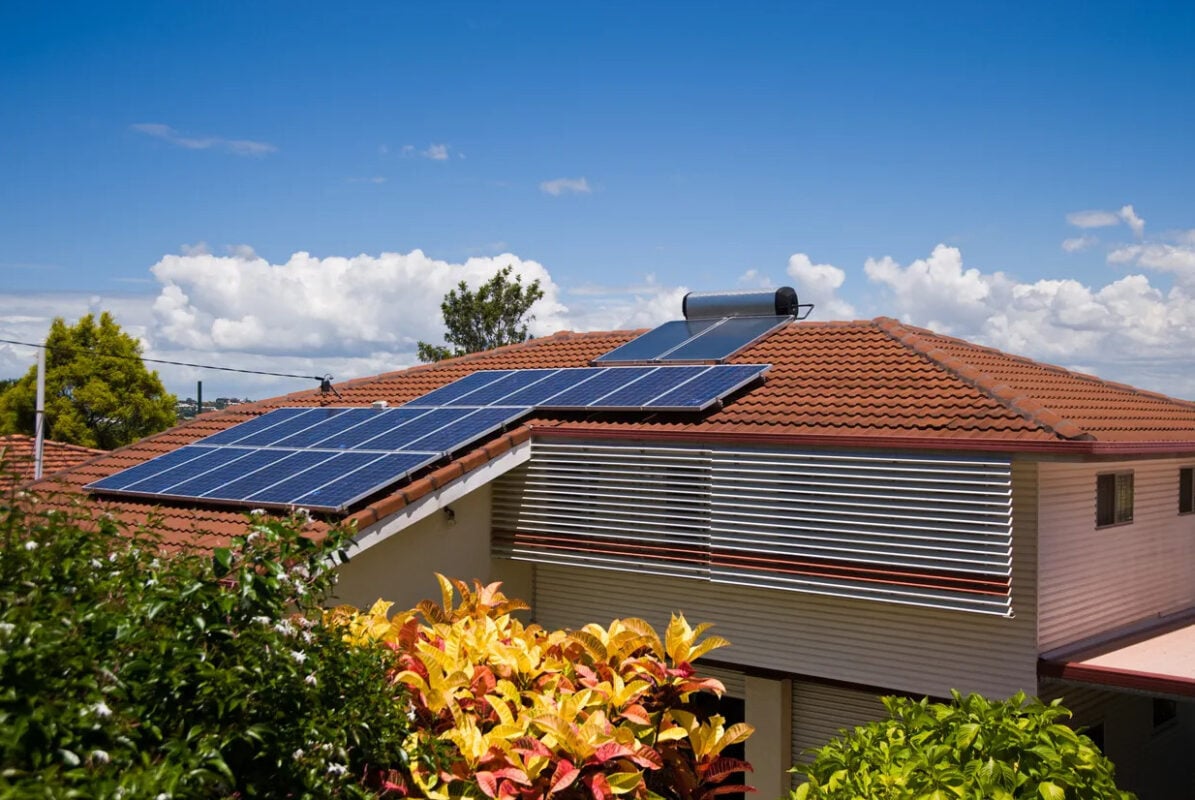FAU Innovation for Next-Generation AI Factories Featured by NVIDIA – Florida Atlantic University

Report on Liquid-Cooling Technologies for Sustainable AI Data Center Infrastructure
Executive Summary
Research conducted by Florida Atlantic University’s College of Engineering and Computer Science, in collaboration with industry and national laboratory partners, demonstrates that direct-to-chip liquid cooling presents a viable and sustainable solution to the growing energy and thermal challenges in artificial intelligence (AI) data centers. The findings indicate significant improvements in computational performance, energy efficiency, and operational cost-effectiveness, directly aligning with several United Nations Sustainable Development Goals (SDGs). This report outlines the research findings and their implications for building sustainable AI infrastructure.
Research Findings and Performance Metrics
The study, titled “Comparison of Air-Cooled Versus Liquid-Cooled NVIDIA GPU Systems,” provides empirical evidence of the superiority of liquid cooling over traditional air-cooling methods in high-density GPU environments. The key outcomes are as follows:
- Thermal Management: Liquid-cooled systems maintained GPU temperatures between 46°C and 54°C, a marked improvement over the 55°C to 71°C range observed in air-cooled systems.
- Computational Throughput: A performance gain of up to 17% was recorded, alongside a 1.4% acceleration in training times for large-scale AI models.
- Energy Consumption: A reduction of 16% in node-level power consumption was achieved, translating to an average saving of 1 kilowatt per server node.
- Economic Impact: The efficiency gains project to annual energy cost savings of between $2.25 million and $11.8 million for AI data centers operating 2,000 to 5,000 GPU nodes.
Alignment with Sustainable Development Goals (SDGs)
The adoption of liquid-cooling technology is a critical step toward aligning the rapid expansion of AI infrastructure with global sustainability targets. The research findings directly support the following SDGs:
SDG 7: Affordable and Clean Energy & SDG 13: Climate Action
The study’s results present a clear pathway to reducing the energy intensity of the AI industry, a key objective of SDG 7, and mitigating its climate impact, in line with SDG 13.
- Enhanced Energy Efficiency: The 15% to 20% reduction in facility-level energy use directly contributes to Target 7.3, which aims to double the global rate of improvement in energy efficiency.
- Reduced Carbon Footprint: By lowering electricity consumption, this technology inherently reduces the carbon footprint of data centers, supporting climate change mitigation efforts. Centralized liquid-cooling systems enable more accurate Power Usage Effectiveness (PUE) metrics, promoting transparent and sustainable energy management.
SDG 9: Industry, Innovation, and Infrastructure
This research fosters innovation for building resilient and sustainable infrastructure, a cornerstone of SDG 9.
- Sustainable Industrialization: The technology enables the development of “AI factories” that are not only more powerful but also more environmentally sustainable, promoting an upgrade to industrial infrastructure (Target 9.4).
- Resource-Use Efficiency: By increasing compute density within existing data-center footprints, liquid cooling promotes greater resource-use efficiency and the adoption of clean and environmentally sound technologies.
SDG 12: Responsible Consumption and Production
The findings advocate for more sustainable patterns of consumption and production within the high-performance computing sector, as called for in SDG 12.
- Efficient Use of Natural Resources: The significant reduction in energy required per unit of computation represents a more efficient use of natural resources, aligning with Target 12.2.
- Sustainable Corporate Practices: The research provides a technical foundation for data center operators to integrate sustainability into their operational models, reducing waste and environmental impact.
Conclusion
The research from Florida Atlantic University establishes that liquid cooling is not merely an engineering optimization but a strategic imperative for the future of AI. By addressing the critical bottlenecks of heat and energy consumption, this technology enables higher performance while advancing global goals for energy efficiency, sustainable infrastructure, and climate action. As stated by Dr. Arslan Munir, “By rethinking how we cool and power AI factories, we can dramatically increase performance while aligning with global sustainability and cost-reduction goals.” This innovation charts a clear path toward developing AI infrastructure that is both powerful and sustainable.
Analysis of Sustainable Development Goals in the Article
1. Which SDGs are addressed or connected to the issues highlighted in the article?
- SDG 7: Affordable and Clean Energy
- The article’s primary focus is on increasing energy efficiency and reducing power consumption in AI data centers. It highlights how liquid-cooling technology leads to “lower energy consumption” and a “16% reduction in node-level power consumption,” directly addressing the goal of cleaner and more efficient energy use.
- SDG 9: Industry, Innovation, and Infrastructure
- The research represents a significant innovation in designing sustainable infrastructure for the technology industry. The article discusses building the “next wave of artificial intelligence factories” and how this technology provides a “sustainable path for building more efficient AI factories,” which aligns with upgrading infrastructure for sustainability.
- SDG 12: Responsible Consumption and Production
- The article addresses the need for more sustainable production patterns in the rapidly growing AI industry. By reducing the vast amounts of energy consumed by data centers, the liquid-cooling technology promotes the efficient use of natural resources (energy), a core principle of SDG 12.
- SDG 13: Climate Action
- The research directly contributes to climate action by mitigating the environmental impact of energy-intensive data centers. The article explicitly states that one of the benefits of the technology is a “reduced carbon footprint,” which is a critical component of combating climate change.
2. What specific targets under those SDGs can be identified based on the article’s content?
- Target 7.3: Double the global rate of improvement in energy efficiency
- The research demonstrates a clear improvement in energy efficiency. The article quantifies this with metrics like a “15% to 20% lower facility-level energy use” and an “Average 1 kilowatt reduction per server node,” directly contributing to the goal of enhancing energy efficiency.
- Target 9.4: Upgrade infrastructure and retrofit industries to make them sustainable
- The article describes liquid cooling as an innovative technology to upgrade AI infrastructure (“AI factories”). It promotes “greater adoption of clean and environmentally sound technologies” by showing how this method can “lower operational costs, reduce environmental impact, and significantly increase compute density within existing data-center footprints.”
- Target 12.2: Achieve the sustainable management and efficient use of natural resources
- The technology promotes the efficient use of energy, a critical natural resource. By reducing power consumption by up to 16% at the node level, it directly supports the sustainable management of energy resources required to power the digital economy.
3. Are there any indicators mentioned or implied in the article that can be used to measure progress towards the identified targets?
- Energy Consumption Reduction: The article provides specific quantitative indicators of progress, including a “16% reduction in node-level power consumption,” an “Average 1 kilowatt reduction per server node,” and “15% to 20% lower facility-level energy use.”
- Economic Savings: An indicator of the technology’s viability and impact is the “potential annual facility-scale savings of $2.25 million to $11.8 million,” which measures the financial benefits of sustainability.
- Carbon Footprint: The article explicitly mentions a “reduced carbon footprint” as a key outcome, which is a direct indicator of progress towards climate goals (SDG 13).
- Power Usage Effectiveness (PUE): The article states that liquid cooling enables “more accurate Power Usage Effectiveness metrics.” PUE is a standard industry metric used to measure the energy efficiency of a data center, making it a key implied indicator.
- Performance Throughput: The finding of “up to 17% higher computational throughput” serves as an indicator that sustainable upgrades can also enhance industrial productivity, aligning with the goals of SDG 9.
4. Summary Table of SDGs, Targets, and Indicators
| SDGs | Targets | Indicators |
|---|---|---|
| SDG 7: Affordable and Clean Energy | 7.3: By 2030, double the global rate of improvement in energy efficiency. |
|
| SDG 9: Industry, Innovation, and Infrastructure | 9.4: By 2030, upgrade infrastructure and retrofit industries to make them sustainable, with increased resource-use efficiency and greater adoption of clean and environmentally sound technologies and industrial processes. |
|
| SDG 12: Responsible Consumption and Production | 12.2: By 2030, achieve the sustainable management and efficient use of natural resources. |
|
| SDG 13: Climate Action | Integrate climate change measures into policies, strategies and planning. |
|
Source: fau.edu
What is Your Reaction?
 Like
0
Like
0
 Dislike
0
Dislike
0
 Love
0
Love
0
 Funny
0
Funny
0
 Angry
0
Angry
0
 Sad
0
Sad
0
 Wow
0
Wow
0














































.jpg.webp?itok=0ZsAnae9#)







:focal(1500,1000)/https://media.globalcitizen.org/a6/9a/a69a4720-d8a1-4715-b596-18738d03c05c/rotary_polio_hero_image.jpg?#)

/countries/sri-lanka/photo-credit---dmc-sri-lanka.tmb-1200v.jpg?sfvrsn=dc298bcc_1#)



















